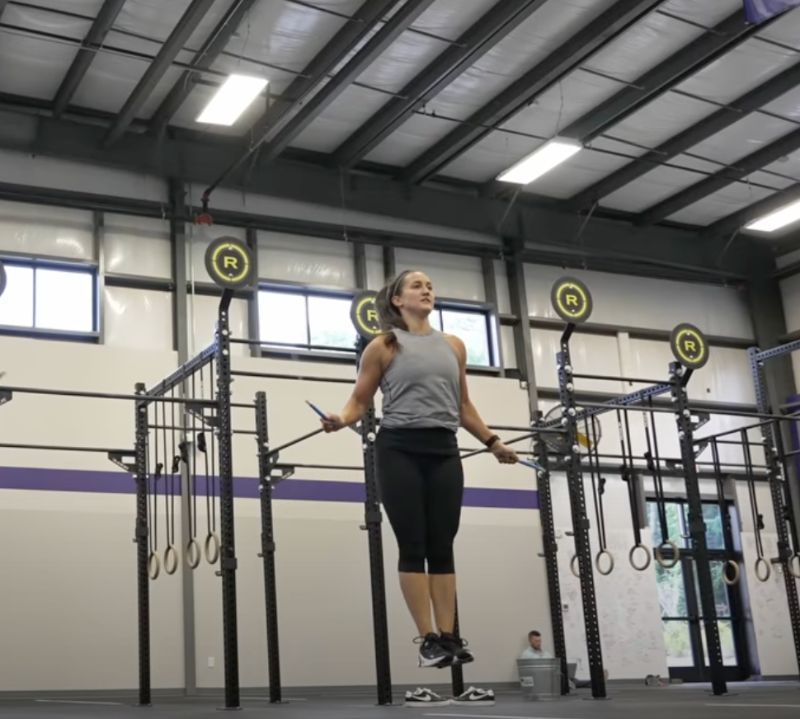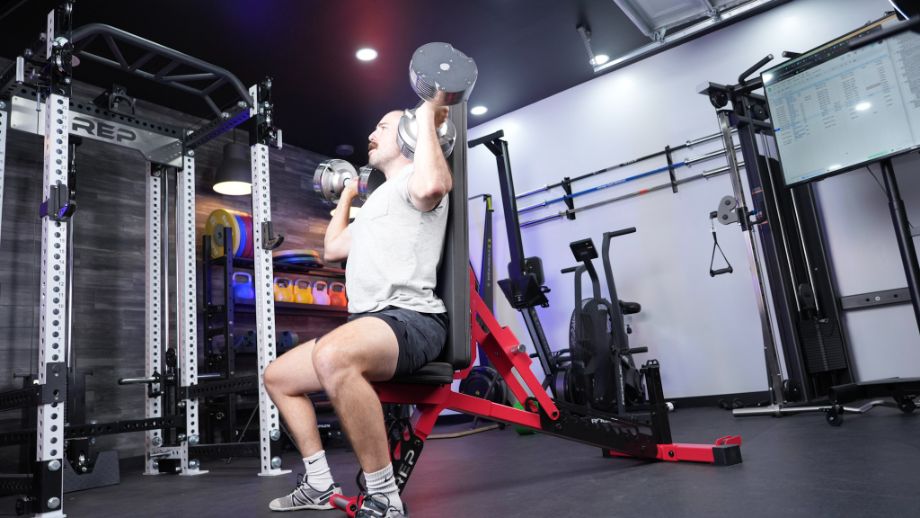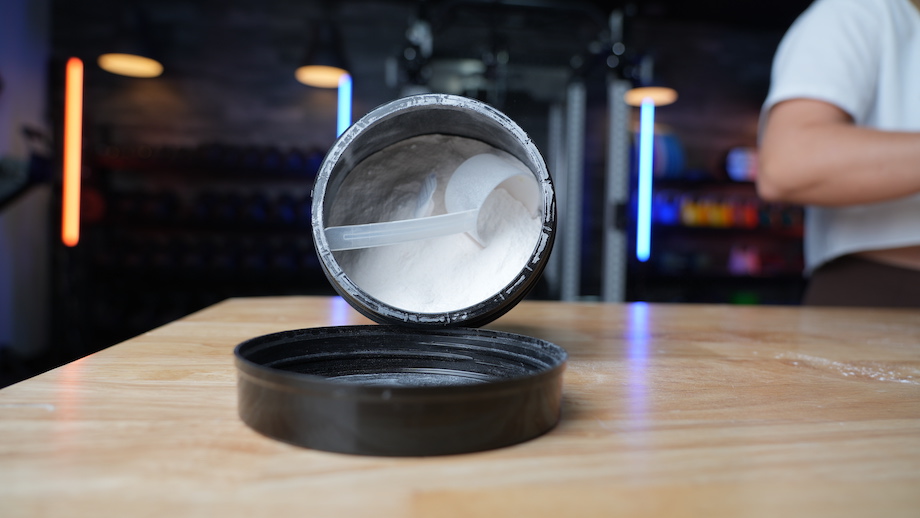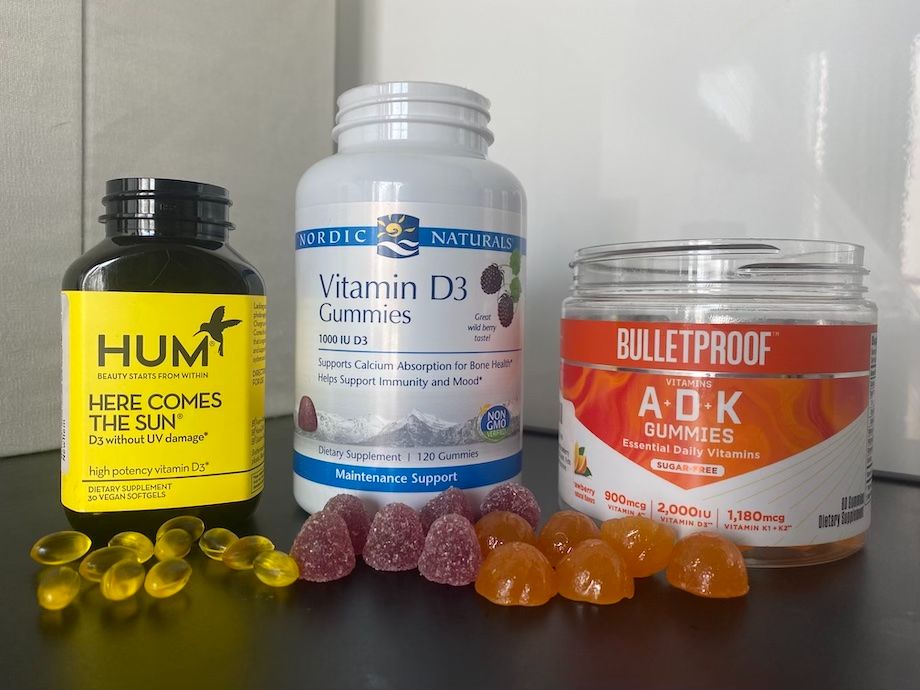Once upon a time, you might have cycled between cutting to lose body fat and bulking to build muscle. But what if you want to achieve both simultaneously? Believe it or not, it’s possible!
The traditional dilemma of choosing between bulking and cutting is a thing of the past. The key to overcoming these seemingly contradictory goals is adjusting your macros for fat loss and muscle gain—and playing the long game!
If you’re ready to embark on a body recomposition journey, join me, a registered dietitian, as I provide initial guidance on calculating your macros to live out these two truths in tandem.
Medical disclaimer: This article is intended for educational and informational purposes only. It is not intended as a substitute for medical advice. For health advice, contact a licensed healthcare provider.
Macros for Fat Loss and Muscle Gain
Macronutrients1, or simply “macros,” are the essential nutrients your body needs in significant amounts. The three primary macros are carbohydrates, proteins, and fats. Each plays unique roles and provides energy as calories: carbohydrates and proteins supply 4 calories per gram, while fats offer 9 calories per gram.
Before setting macro targets, you must determine your calorie needs, which vary based on experience level and body composition. For instance, well-trained individuals2 may gain muscle and lose body fat even in a caloric surplus. On the other hand, a 2019 review3 suggests calorie deficits are generally reserved for beginners, individuals with a higher body fat percentage, and those not optimizing their diet and exercise regimen.
Nonetheless, a 2021 study4 advocates for a deficit of no more than 500 calories daily to maintain muscle mass and lose fat. The amount of protein that makes up those calories is also heavily emphasized.
Protein
Protein, composed of building blocks known as amino acids, is crucial for muscle growth and maintaining lean muscle tissue during a caloric deficit. It also enhances satiety or feelings of fullness.
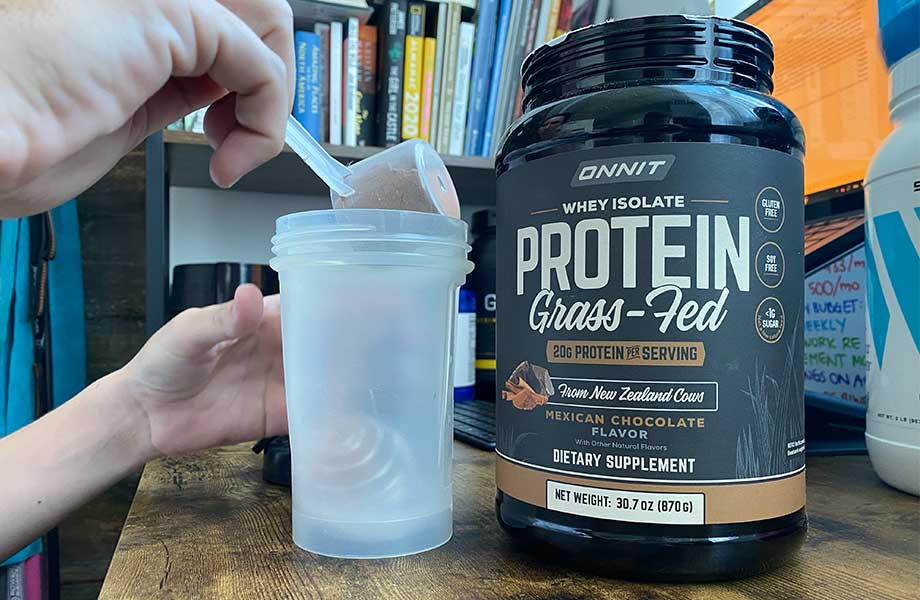
The Recommended Dietary Allowance (RDA) for protein is 0.8 grams per kilogram of body weight (g/kg), yet research5 suggests that 1.6 to 2.4 grams per kilogram promotes more favorable body composition changes alongside exercise and a low-calorie diet. For trained lifters, consuming 2.0 to 3.4 grams per kilogram is advised for optimal body composition changes, according to the International Society of Sports Nutrition6.
Opt for lean, high-protein foods—like sirloin, chicken breast, and low-fat Greek yogurt—to meet your protein needs without excess fat or calories.
Fat
Despite being the most calorically dense macro, it’s recommended to consume at least 20 percent of daily calories from fat, even when trying to lose fat. This recommendation falls within the Acceptable Macronutrient Distribution Range7 (AMDR) of 20 to 35 percent of daily calories, considered ideal for maintaining optimal health.
Prioritize healthy fats—such as olive oil, fatty fish, avocados, nuts, and seeds—over foods high in saturated and trans fats (think fried foods and pastries).
Carbohydrates
Carbohydrates are converted into glucose, the preferred energy source for our brain and body. They can also be stored as liver and muscle glycogen8, protecting against muscle loss and serving as a crucial energy reserve for high-intensity workouts.
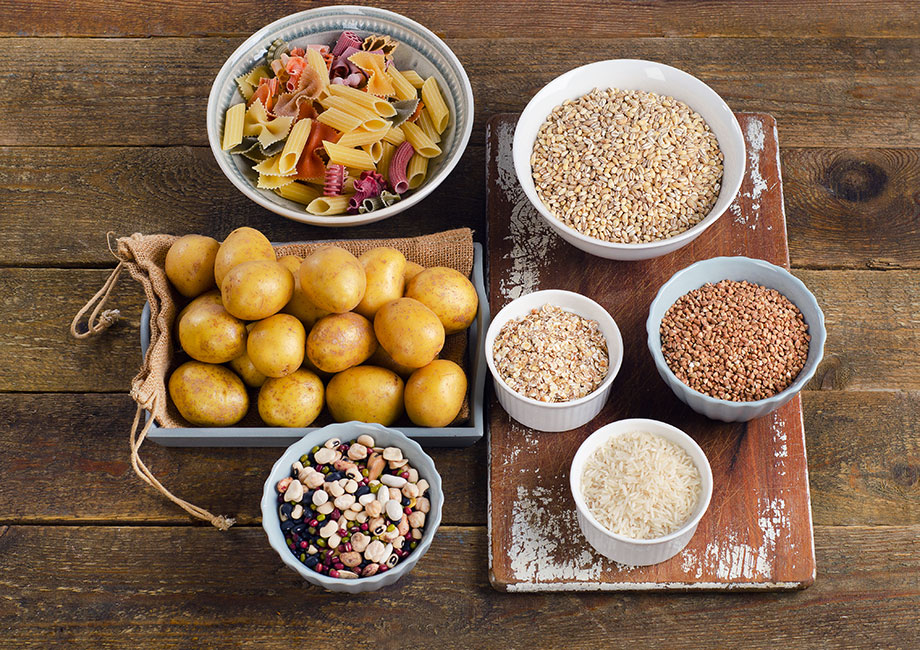
After accounting for protein and fat, carbohydrates should make up the remainder of your calories. Opt for fiber- and nutrient-rich carb sources—such as whole grains, fruits, vegetables, and legumes—to provide energy, promote satiety, and support overall health.
How to Calculate Macros for Fat Loss and Muscle Gain
Calculating macros can help you optimize fat loss and muscle gain. Here’s a blueprint for determining your numbers.
Total Calorie Intake
First, establish your caloric needs with an online calculator or formulas like the Mifflin-St. Jeor, which is recognized for its accuracy by the Academy of Nutrition and Dietetics9.
How to Use Mifflin-St. Jeor
The equation estimates your resting metabolic rate (RMR)—the number of calories you burn at rest—and takes into account biological sex, weight, height, and age:
- Men: Calories/day = 10 x weight (kg) + 6.25 x height (cm) – 5 x age (years) + 5
- Women: Calories/day = 10 x weight (kg) + 6.25 x height (cm) – 5 x age (years) – 161
Conversion notes:
- To convert pounds to kilograms, divide your weight in pounds by 2.2.
- For feet/inches to centimeters, multiply height in inches by 2.54.
Multiply your RMR by an activity factor to get your total daily energy expenditure (TDEE), the total calories you expend daily through all activities, including RMR and physical activity. TDEE is also your maintenance calories, the calories needed to maintain your current body weight.
Activity Factors:
- Sedentary: 1.2
- Lightly active: 1.375
- Moderately active: 1.55
- Active: 1.725
- Very active: 1.9
For weight loss and muscle gain, include resistance training, maintain a calorie deficit of no more than 500 calories, and avoid prolonged calorie restriction4.
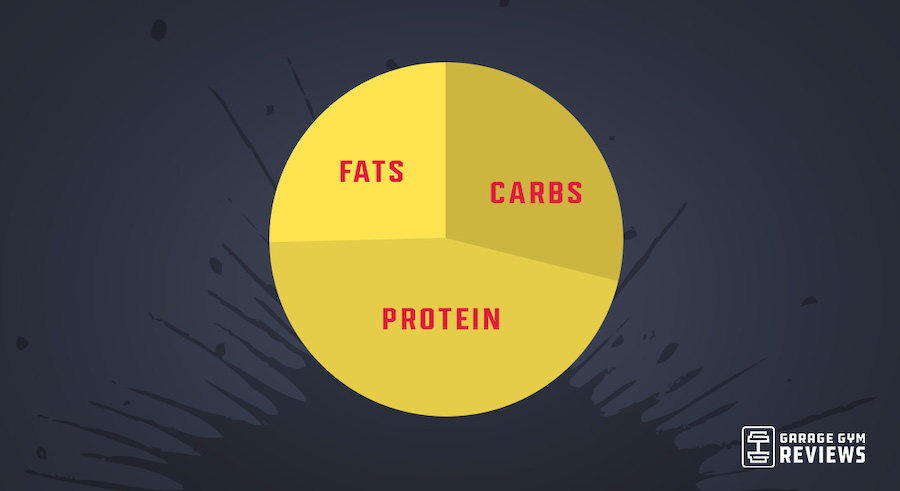
Example Using Mifflin-St. Jeor
Stats: A 41-year-old male weighing 200 pounds who is 6 feet tall with some experience lifting weights and a light activity level throughout the day.
Convert Metrics:
- Weight: 200 lbs ÷ 2.2 = 90.9 kg
- Height: 6’0” = 72 inches x 2.54 = 183 cm
Calculate RMR for Men:
- RMR = 10 x weight (kg) + 6.25 x height (cm) – 5 x age (years) + 5
- RMR = 10 x 90.9 kg + 6.25 x 183 cm – 5 x 41 + 5 = 1,858 calories
Multiply RMR by Activity Factor:
- TDEE = 1,858 calories (RMR) x 1.375 (“lightly active” activity factor) = 2,555 calories
Adjust Calorie Needs to Your Goals:
Determine your calorie needs based on your goals. We’ll start with a conservative deficit for our example, but know you can (and should) re-evaluate and tweak depending on your progress.
- 2,555 calories (TDEE) – 200 calories = 2,355 calories daily in a caloric deficit
Protein
Advanced and lean lifters may go as high as 3.4 grams per kilogram, although aiming for 1.6 to 2.4 grams per kilogram of body weight suits most people. For our example, this ranges between 145 to 218 grams of protein daily, and we’ll use an average of 182 grams or 2.0 grams per kilogram for simplicity.
- Convert grams to calories: 182 g protein x 4 calories per 1 gram = 728 calories from protein
- Protein’s percentage of daily calories = 728 ÷ 2355 (total calories) x 100 = ~30% protein
Fat
Ensure at least 20% of your diet is fat to support hormonal and overall health.
- Calculate fat intake: 2,355 daily calories x 0.20 (20% fat) = 471 calories from fat
- Convert to grams: 471 calories ÷ 9 calories per 1 g fat = ~53 grams of fat daily
Carbohydrates
Adjust carb intake based on the remaining calories after accounting for protein and fat.
- Calculate carb percentage: 100% – 30% (protein) – 20% (fat) = 50% from carbs
- Convert to calories and grams: 2,355 calories x 0.50 (50% carbs) = 1,177 calories from carbs = 1,177 ÷ 4 cals per 1 g carb = ~294 grams of carbs daily
Example Daily Macro Totals
- Calories: 2,355
- Protein: 182 g (30%)
- Fat: 53 g (20%)
- Carbs: 294 g (50%)
Use these ratios as starting points and adjust them to meet your needs and preferences, ideally guided by a nutrition expert.
How To Track Your Macros
Tracking your macronutrient intake can be as detailed or simple as you prefer. Here’s a quick guide to accurately and effectively log your macros.
Choose Your Tracking Tool
Keep a detailed food diary or use an app to track everything you consume throughout the day. Many apps—such as MyFitnessPal and Lose It!—conveniently track your daily macro totals. Some apps also allow you to scan barcodes, making it easier to log packaged foods.
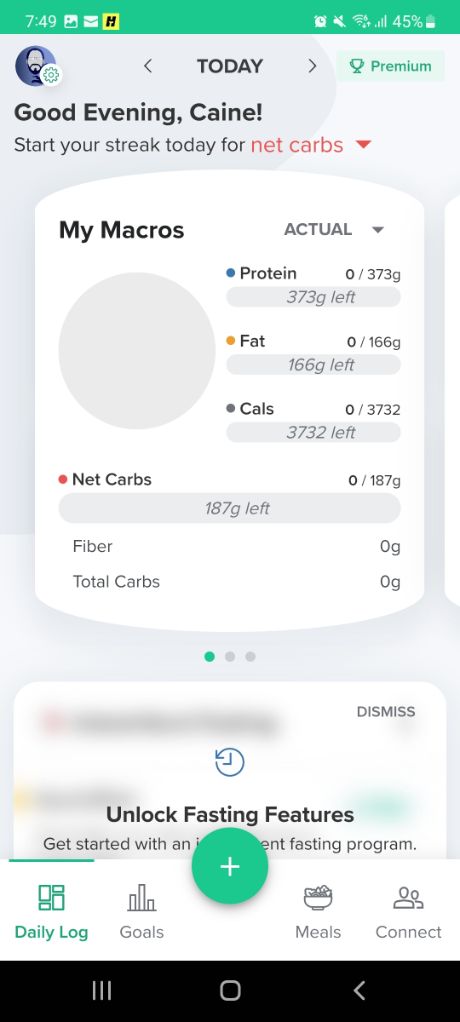
Enhance Precision
Tracking macros is susceptible to errors from estimated portions and overlooked meals. Increase accuracy with these tips:
- Log foods and drinks before or right after consumption.
- Use measuring tools, like a food scale, for precise portions.
- Include condiments, cooking oils, sauces, and additions to your coffee or tea.
- Read the Nutrition Facts label and pay attention to the serving size and serving size per container.
Precision matters more to some (like bodybuilders) than to others. If tracking around the clock feels overwhelming, consider doing it a few days a week.
Re-Evaluate
Stick with your macro goals for a few weeks, then adjust as necessary. For instance, if you’re aiming for fat loss but not achieving results, you may slightly reduce your calorie intake and reassess after implementing the new targets.
However, also recognize that the weight on the scale likely won’t reflect changes related to muscle growth and fat loss. If you want objective data, measurements like skinfold and body circumference will better reveal body composition changes.
Macros vs Calories
Calories10 are the energy units derived from our food and drinks, essential for fueling the body’s vital functions. These calories originate from the three primary macronutrients: proteins, carbohydrates, and fats.
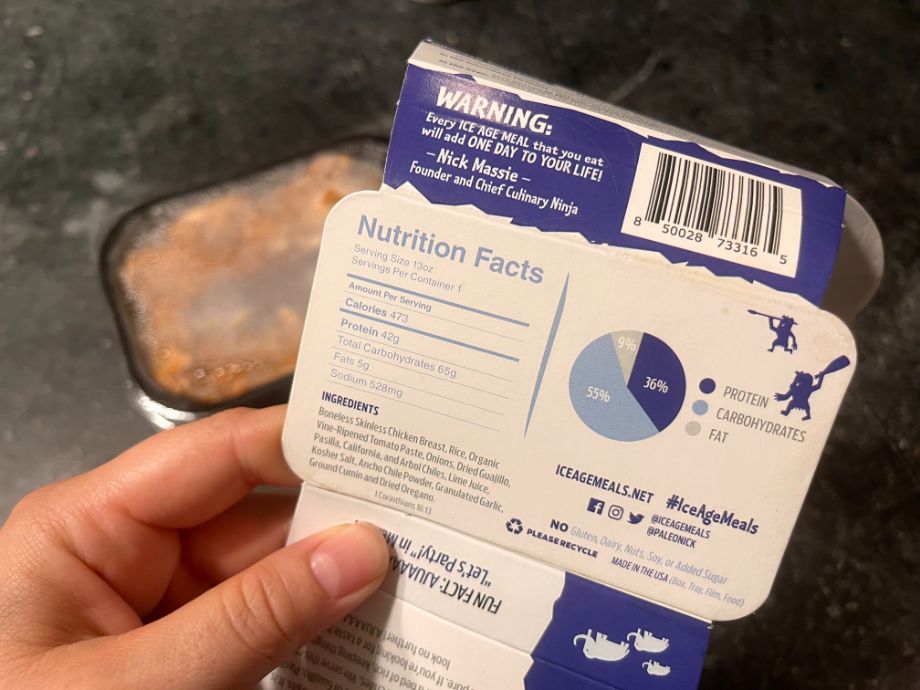
Think of calories as 150 minutes of physical activity per week and the macronutrients as the types of exercise that make up those minutes. For instance, you may allocate 75 minutes (50%) toward strength training, 45 minutes (30%) toward cardio, and 30 minutes (20%) toward mobility exercises.
All this leads to the question: Should you track macros or calories?
Choosing Between Calorie and Macro Tracking
Choosing between tracking calories or macros hinges on individual preferences, fitness goals, and experience. For beginners, calorie counting is fundamental for better understanding the energy we get from food. Conversely, counting macros is more advanced and fosters a balanced meal plan of carbs, protein, and fat.
Ultimately, calorie counting can overlook food quality, whereas tracking macronutrients ensures you consume vital micronutrients from various sources. Macro tracking also confirms you consume enough protein to support your muscle-building and fat-burning goals.
RELATED: How Much Protein To Gain Muscle?
However, tracking isn’t appropriate for everyone, particularly for individuals with a history of disordered eating patterns. Yet, it offers a way to monitor intake for those focused on specific health or fitness goals.
Macros for Fat Loss and Muscle Gain: Final Thoughts
Achieving fat loss and muscle gain simultaneously is achievable with a strategic approach to nutrition:
- Calories: Maintain a slight calorie deficit, ideally not exceeding 500 calories.
- Protein: Aim for a daily intake of 1.6 to 2.4 grams per kilogram of body weight to support muscle repair and growth. Well-trained individuals may need as much as 3.4 grams per kilogram.
- Fats: Despite their caloric density, fats play a key role in hormonal and overall health and should constitute at least 20% of your daily calorie intake.
- Carbs: After allocating calories for protein and fat, use the remainder for carbohydrates to help fuel your workouts and preserve muscle mass in a calorie deficit.
- Modify as needed: Monitor your macronutrient intake, assess your progress, and make necessary adjustments.
Also, remember that macros for fat loss and muscle gain are just part of the equation. Just like meeting all fitness and body composition goals (including bulking and cutting), implementing well-structured resistance training, getting adequate sleep, and staying consistent and patient are necessary.
Macros for Fat Loss and Muscle Gain: FAQs
What is the best macro ratio for losing fat and gaining muscle?
The best macro ratio for losing fat and gaining muscle varies individually. However, a common approach involves maintaining a slight caloric deficit with a macronutrient distribution of approximately 30% protein, 20% fat, and 50% carbohydrates. This balance supports muscle growth, sustains energy levels, and promotes overall health.
What should my macros be for fat loss?
Although there isn’t a universal macro ratio for fat loss, target a higher protein intake of 1.6 to 2.4 grams per kilogram of body weight, ensure fats comprise at least 20% of your calories, and adjust carbohydrates accordingly. This strategy helps maintain muscle mass and energy during a calorie deficit.
Is 40-30-30 good for macros?
The 40-30-30 ratio of carbohydrates, protein, and fats mostly adheres to AMDR guidelines but has a lower carbohydrate percentage than the recommended 45-65% of daily calories. While not inherently problematic, consuming sufficient high-quality carbs is important to fuel workouts and maintain health.
These statements have not been evaluated by the Food and Drug Administration. This product is not intended to diagnose, treat, cure, or prevent any diseases.
References
- Venn BJ. Macronutrients and Human Health for the 21st Century. Nutrients. 2020 Aug 7;12(8):2363. doi: 10.3390/nu12082363. PMID: 32784664; PMCID: PMC7468865.
- Barakat C, Pearson J, Escalante G, Campbell B, De Souza EO. Body Recomposition: Can Trained Individuals Build Muscle and Lose Fat at the Same Time?. Strength Cond J. 2020;Publish Ahead of Print(5). doi:https://doi.org/10.1519/SSC.0000000000000584
- Slater GJ, Dieter BP, Marsh DJ, Helms ER, Shaw G, Iraki J. Is an Energy Surplus Required to Maximize Skeletal Muscle Hypertrophy Associated With Resistance Training. Front Nutr. 2019;6:131. doi:https://doi.org/10.3389/fnut.2019.00131
- Murphy C, Koehler K. Energy Deficiency Impairs Resistance Training Gains in Lean Mass but not Strength: A Meta‐Analysis and Meta‐Regression. Scand J Med Sci Sports. 2021;32(1). doi:https://doi.org/10.1111/sms.14075
- Campbell B, Kreider RB, Ziegenfuss T, et al. International Society of Sports Nutrition position stand: protein and exercise. JISSN. 2007;4(1):8. doi:https://doi.org/10.1186/1550-2783-4-8
- Antonio J, Ellerbroek A, Silver T, et al. A high protein diet (3.4 g/kg/d) combined with a heavy resistance training program improves body composition in healthy trained men and women – a follow-up investigation. JISSN. 2015;12(1). doi:https://doi.org/10.1186/s12970-015-0100-0
- Institute of Medicine. Dietary reference intakes for energy, carbohydrate, fiber, fat, fatty acids, cholesterol, protein, and amino acids. Washington, DC: The National Academies Press. Published 2005. https://doi.org/10.17226/10490.
- Murray B, Rosenbloom C. Fundamentals of glycogen metabolism for coaches and athletes. Nutr Rev. 2018 Apr 1;76(4):243-259. doi: 10.1093/nutrit/nuy001. PMID: 29444266; PMCID: PMC6019055.
- Frankenfield D, Roth-Yousey L, Compher C. Comparison of predictive equations for resting metabolic rate in healthy nonobese and obese adults: a systematic review. J Am Diet Assoc. 2005 May;105(5):775-89. doi: 10.1016/j.jada.2005.02.005. PMID: 15883556.
- Osilla EV, Safadi AO, Sharma S. Calories. [Updated 2022 Sep 12]. In: StatPearls [Internet]. Treasure Island (FL): StatPearls Publishing; 2024 Jan-. Available from: https://www.ncbi.nlm.nih.gov/books/NBK499909/



